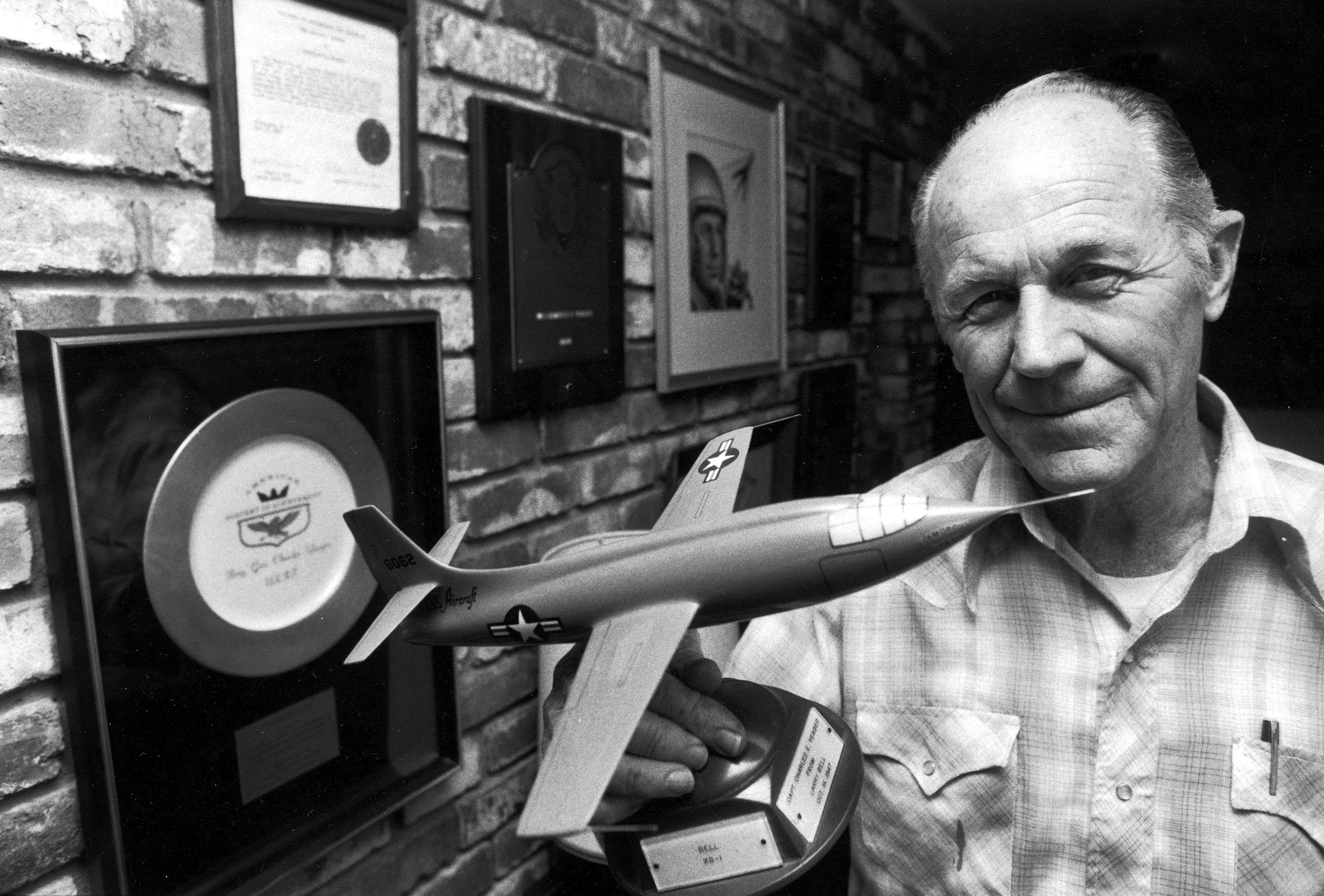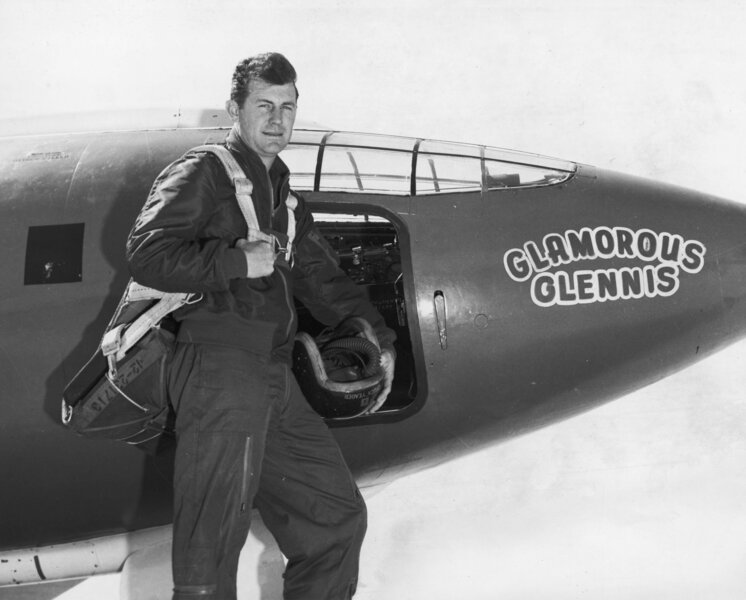Create a free profile to get unlimited access to exclusive videos, sweepstakes, and more!
Test pilot Chuck Yeager, first human to ever break the sound barrier, dies at 97

Pilot Chuck Yeager, the first human being to ever break the sound barrier and travel at the speed of sound, has passed away at the age of 97. The unfortunate news of Yeager's death was confirmed on Twitter by his wife, Victoria. "It is with profound sorrow, I must tell you that my life love General Chuck Yeager passed just before 9pm ET," she wrote. "An incredible life well-lived, America’s greatest pilot and a legacy of strength, adventure, and patriotism will be remembered forever."
Yeager's contributions to American aviation — including his tenure as the first leader of the Aerospace Research Pilot School, which produced the original astronauts — helped pave the way for the Apollo 11 moon landing in 1969, which effectively "won" the Cold War's Space Race for the United States. While not a member of the Mercury Seven, Yeager's story was still chronicled in in Tom Wolf's famous 1979 non-fiction book, The Right Stuff. The book became a feature film in 1983 by way of director Philip Kaufman; in the movie, Yeager was portrayed by Sam Shepard.
"We realized that the so-called 'sound barrier' really restricted from going any faster. And once we got the F-1 above the speed of sound and then smoked on out the Mach-2 and beyond, we realized, 'Hey, this opens up the whole universe for us," Yeager once said during an interview for the 1988 BBC documentary Reaching for the Skies.
"Not content to rest on his laurels, he went on to break his own record and travel at Mach 2.44. But even before that he was serving his country heroically in World War II. Long after he became a legend in his own time, he continued to serve his country through the military and later in his ongoing work to test new aircraft," NASA Administrator Jim Bridenstine said in a statement. "Chuck's bravery and accomplishments are a testament to the enduring strength that made him a true American original, and NASA's Aeronautics work owes much to his brilliant contributions to aerospace science. As a young naval aviator, I was one of many around the world who looked up to Chuck Yeager and his amazing feats as a test pilot. His path blazed a trail for anyone who wanted to push the limits of human potential, and his achievements will guide us for generations to come."
Chuck was born Charles Elwood Yeager in Myra, West Virginia in February of 1923. Thanks to his father, he had a knack for fixing machinery from a very young age. He graduated high school six months before the U.S. entered World War II and enrolled in the Army Air Corps following the attack on Pearl Harbor. In February 1944, he began flying combat missions in the European theater, but was shot down in early March. With help from the French resistance, he was able to avoid being captured by the Nazis.
After the war, Yeager became a test pilot at Wright Field in Ohio, where he was the first person to fly America's first operational jet fighter, the P-80A Shooting Star. His real claim to fame came in the fall of 1947 when he used the Bell X-1 rocket research plane (lovingly named "Glamorous Glennis" by Yeager) to break the sound barrier, a feat that earned him the media nickname of "The Fastest Man Alive."
"Every flight that we made, we were in a region where no one had ever had an airplane before. In fact, we didn't even have any wind tunnel data in that region. It was, every day, something new," Yeager explained in Reaching for the Skies. "The flight itself went as expected. We'd been having a lot of trouble with fires in the tail of the airplane and igniters that wouldn't work. Fortunately, they all worked that day ... Once we got the Mach jump on the Mach meter and all the buffeting smoothed out and we got our first sonic boom, it almost was a letdown. The damn thing didn't blow up!"
It's even more impressive when you consider the fact that he was in immense pain from a recent horseback riding accident several days before the flight. "I was hurting ... I broke a couple ribs and hurt my shoulder ... I wasn't feeling too good, but the point was I made the decision to fly the airplane," he recounted. "The combat experience I had made me a very disciplined pilot, meaning that I learned to control my emotions and feelings toward the outcome. It didn't make any difference to me, whether the X-1 blew into a million pieces or not because I couldn't do anything about it. So you have to put it out of your mind; you do that in combat."
In 1962, Yeager became the commander of the USAF Aerospace Research Pilot School, which prepared pilots for space-flight. The school was so competitive, that only 1 percent of applicants were accepted into its program. Thirty-seven of its graduates were selected for the U.S. space program and 26 of them became certified astronauts via the Gemini, Apollo, and Space Shuttle missions. Despite the fact that he never became an astronaut himself, Yeager still had a profound impact on space travel as a mentor and teacher.
By the time he retired in the mid-1970s, Yeager had clocked over 10,000 hours of flight time in over 360 different types of aircraft. Throughout his career, he racked up several medals: the Distinguished Service Medal, the Silver Star, the Legion of Merit, the Distinguished Flying Cross and the Bronze Star, and the Presidential Medal of Freedom. In addition to his wife, Yeager is also survived by four children.
(biographical info via ChuckYeager.com & The New York Times)



























